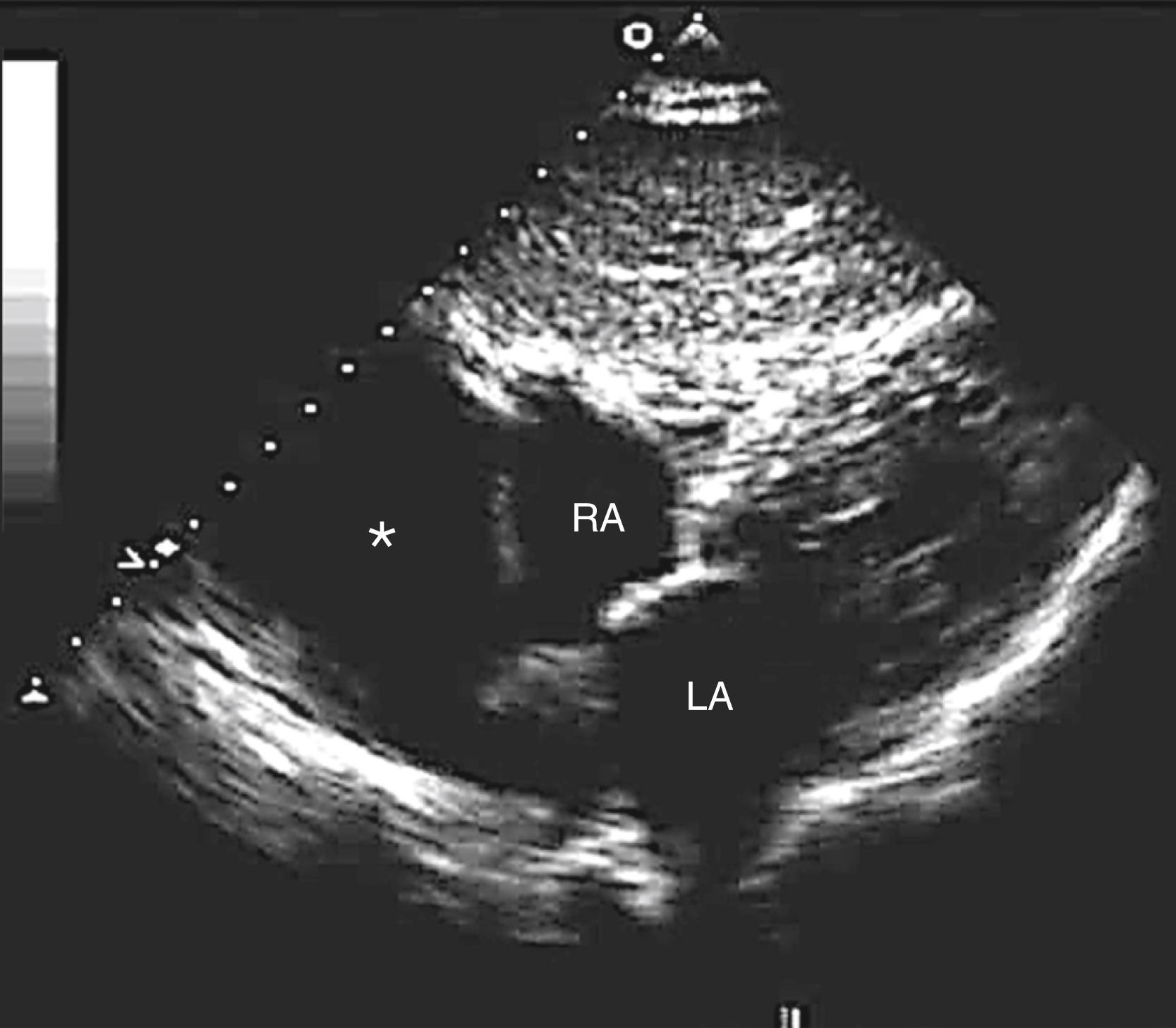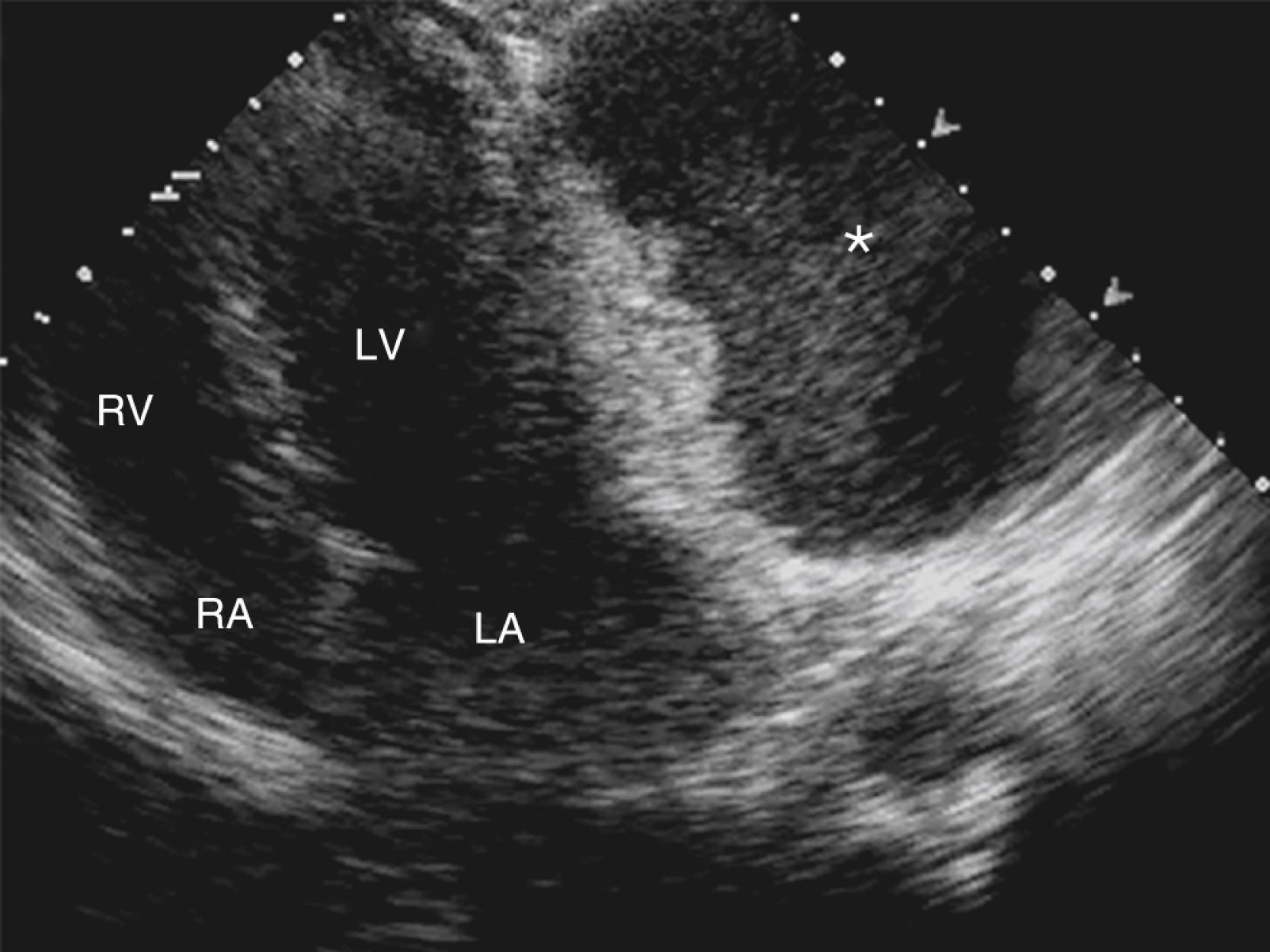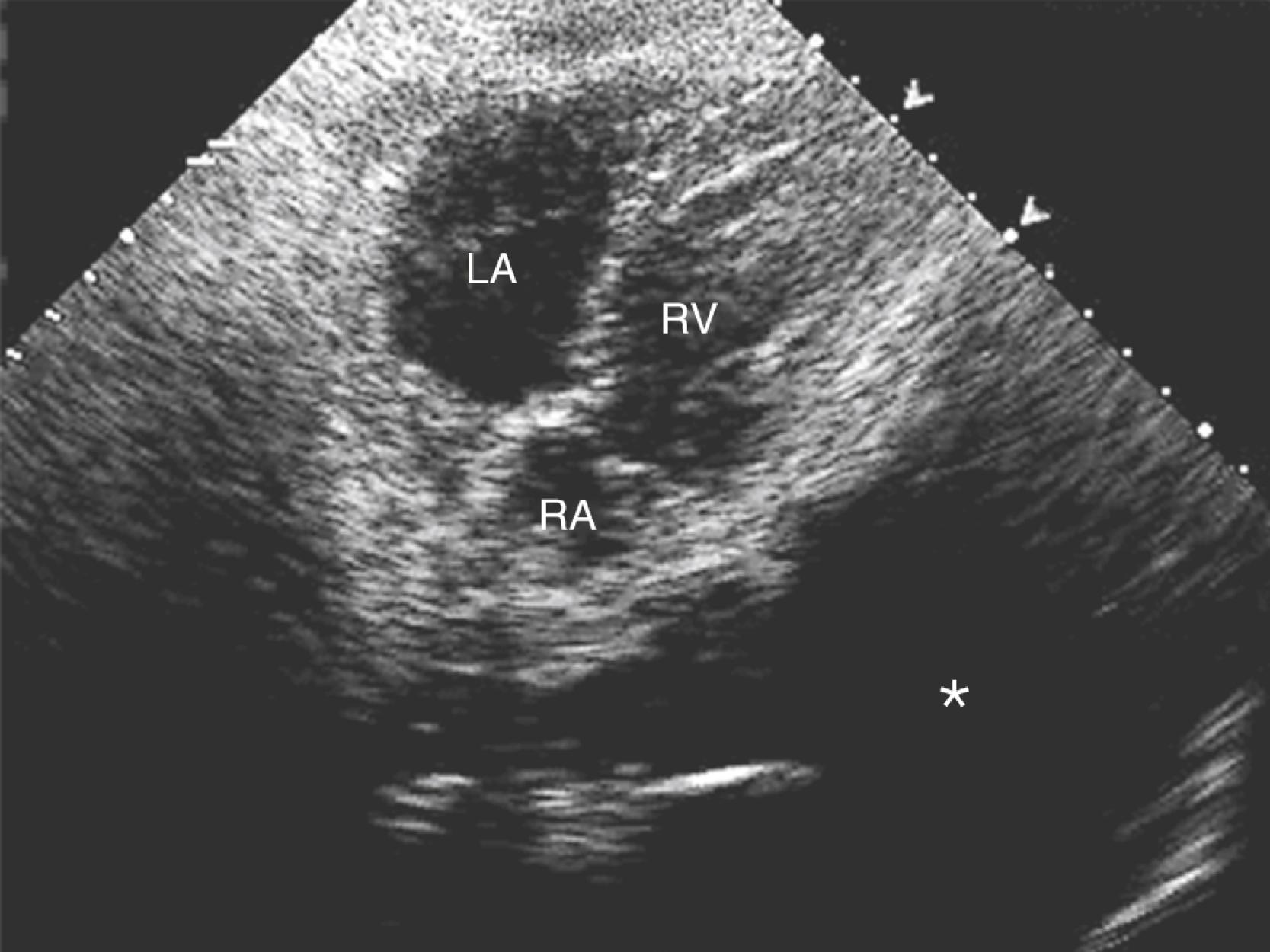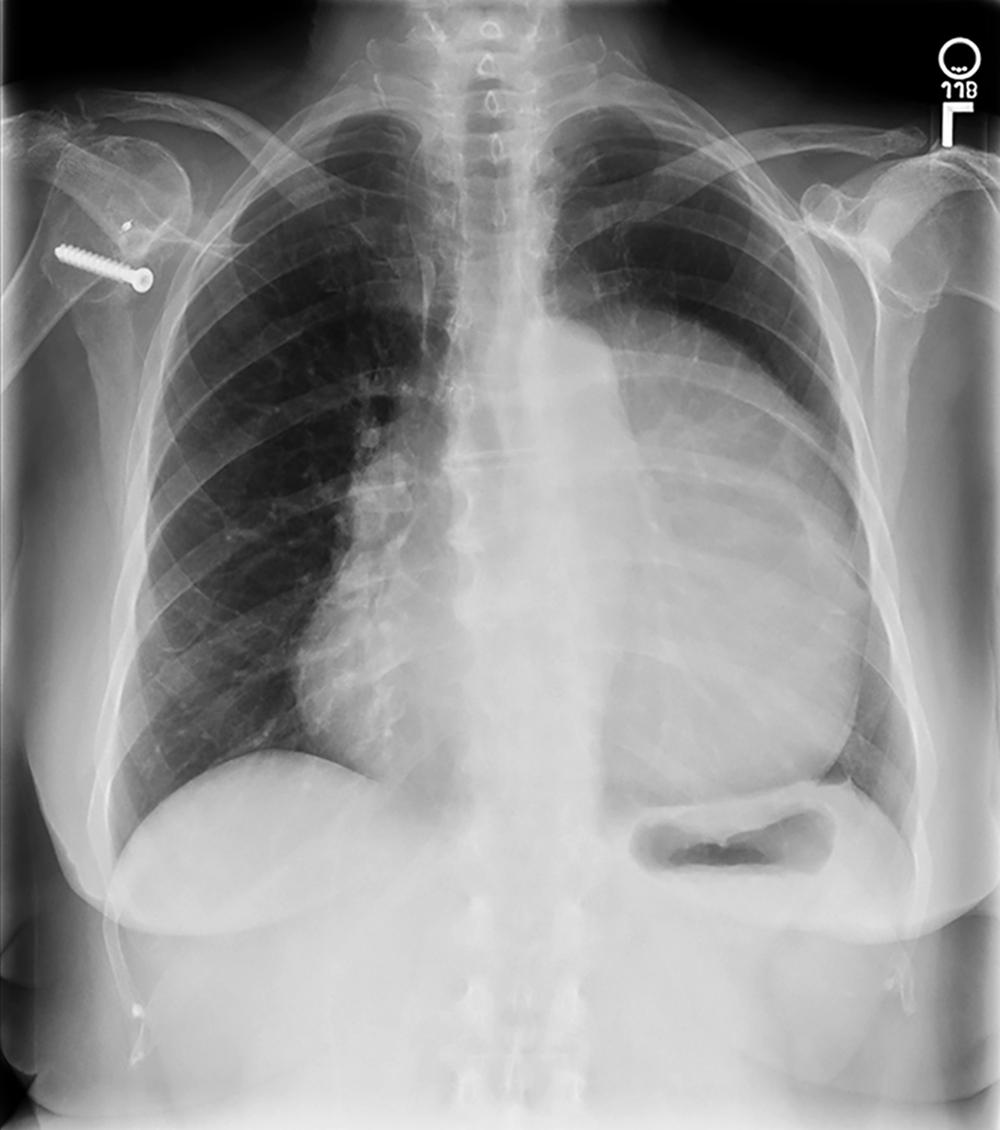Physical Address
304 North Cardinal St.
Dorchester Center, MA 02124
The authors thank Dr. Sonia Jain for her contribution to this chapter in the previous edition.
Pericardial cysts are benign intrathoracic lesions accounting for 6% of all mediastinal masses. They are typically unilocular, contain serous fluid, and range from 1 to 5 cm in diameter, although giant cysts have been reported. Inflammatory cysts and pseudocysts are caused by pericardial inflammation or loculated effusion from surgery, trauma, pericarditis, or chronic bacterial or tuberculous infection. A parasitic or hydatid cyst is typically multilocular.
Most cysts are found by incidental imaging studies performed for other indications. Although many are asymptomatic and have a benign course, up to one-third of patients report atypical chest pain, dyspnea, or persistent cough. Potential complications include cyst infection, hemorrhage or rupture, erosion into adjacent structures such as the superior vena cava (SVC) or right ventricular (RV) free wall, cardiac tamponade, RV outflow tract obstruction, atrial fibrillation, obstruction of the right main bronchus, or sudden death.
The characteristic chest radiography finding is a rounded, well-circumscribed radiodense mass at the right cardiophrenic angle, abutting the diaphragm. Other locations such as the left cardiophrenic angle, hila, or elsewhere in the superior mediastinum have been reported.
On echocardiography, the cyst appears as a rounded, echolucent cystic structure adjacent to the right atrium, which do not communicate with the pericardial space. Transesophageal echocardiography may offer better delineation. Large pericardial cysts may result in right-sided cardiac chamber compression, resulting in symptoms. The differential diagnosis for a pericardial cyst, include a pericardial diverticulum. Pericardial diverticula are extremely rare outpouchings through a defect in the parietal pericardium. Pericardial diverticula communicate with the pericardial space and defect in the pericardial lining and may be noted on echocardiography. Additionally, given their communication with the pericardial space, pericardial diverticula may change in size and shape with repositioning and respiration.
Cardiac magnetic resonance imaging (CMRI) or computed tomography (CT) is usually pursued to confirm the diagnosis, ascertain other anatomic details, and distinguish from neoplasms and aneurysms.
An example of a typical pericardial cyst adjacent to the right atrium is shown in Fig. 124.1 and ![]() . A giant pericardial cyst adjacent to the left ventricle is shown in Figs. 124.2 and 124.3 and ,
. A giant pericardial cyst adjacent to the left ventricle is shown in Figs. 124.2 and 124.3 and , ![]() . The impressive chest radiograph that led to the echocardiographic study demonstrating the giant pericardial cyst is also shown ( Fig. 124.4 ).
. The impressive chest radiograph that led to the echocardiographic study demonstrating the giant pericardial cyst is also shown ( Fig. 124.4 ).




Video 124.1. Subcostal view of a pericardial cyst adjacent to the right atrium (RA). Note the smooth border and that there is no compression of the RA.
Video 124.2. Apical four-chamber view demonstrating a giant pericardial cyst adjacent to the left ventricle and left atrium.
Video 124.3. Subcostal view of the same giant pericardial cyst as in ![]() . The true enormity of the size of the cyst is better revealed from the subcostal view, and the decision was made to percutaneously drain the cyst. A total of 1100 mL of fluid was removed.
. The true enormity of the size of the cyst is better revealed from the subcostal view, and the decision was made to percutaneously drain the cyst. A total of 1100 mL of fluid was removed.
The main differential diagnoses are cardiac and mediastinal tumors, noncardiac cysts, abscesses, and visceral hernias.
Become a Clinical Tree membership for Full access and enjoy Unlimited articles
If you are a member. Log in here